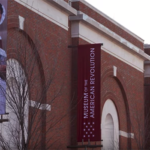Schultz & Williams addresses current and urgent issues facing today’s museums.
If you research “museums and relevance” on the Internet, you’ll find an abundance of essays and articles. In fact, though not specifically about museums, two recent essays in Resources Realized explore approaches that nonprofits may take to establish relevant connections with donors and members. The challenge for museum exhibit-makers and educators is to create programs that visitors find relevant and compelling. So, what do we know about relevance?
Relevance is about engagement. Regardless of their specific perspective, museum professionals agree that relevance resides in the authentic engagement between the organization and the multiple audiences it serves. Museums seek to establish themselves as essential to their communities. In order to achieve this, museums must understand the needs of their communities and then create programs, exhibits, spaces and services that respond to those needs. They must find messages that are consistent with their mission, are meaningful to the audiences they seek to reach and are delivered through media the audiences are likely to use.
Relevance is essential to an organization’s success in fulfilling its mission and achieving financial sustainability—and they’re related. In our world, where people have access to infinite amounts of information and entertainment through the devices they carry in their pockets, museums struggle for visitors’ time and attention. Demographic shifts mean that traditional museum audiences are giving way to younger, more diverse audiences with new and different expectations of a museum visit. If museums are not responsive to those changing expectations, they will fail to attract new audiences and will undermine their ability to achieve their mission or involve the community.
And if museums are not engaging audiences, they are likely not balancing the budget either. Admissions and membership revenues are essential to most museums, as is donated support. Increasingly, donors and members are evaluating organizations based not just on the numbers of people served, but also on the impact that an organization has on the community. If a museum is not offering programs and services the community finds relevant and essential, that museum will be hard-pressed to find partners and donors who are willing to support it.
Relevance requires organizational alignment. Just as changing audience expectations must inform the ways museums plan programs and communicate with donors, changing financial realities are forcing a re-evaluation of the museum’s traditional business model. At the end of even a good year, earned revenue plus contributed support rarely cover expenses, especially as the costs to maintain aging facilities and steward collections steadily rise. When virtually every traditional program is a loss leader, museums must examine what it is they bring to the marketplace, how they create partnerships to strengthen their offerings and how they can identify those community needs that the museum can fill and the community is willing to pay for. Museums must fundamentally re-think the financial model on which they’ve long relied. These challenges defy easy answers, and responsibility for addressing them must be shared across the institution.
Relevance implies a profound shift in an organization’s thinking from inside-out to outside-in. That new perspective must be shared by Board, leadership and staff who work together to confront these unprecedented challenges. Planning must integrate all areas of the museum to ensure that marketing, membership and fundraisers are working closely with program planners and exhibition staff to provide authentic engagement and consistent messaging. Most important, the entire organization must unite in a common understanding of the people it serves and how to engage them—and that museum will succeed in creating the programs and business models that ensure not just sustainability, but growth and dynamism.





